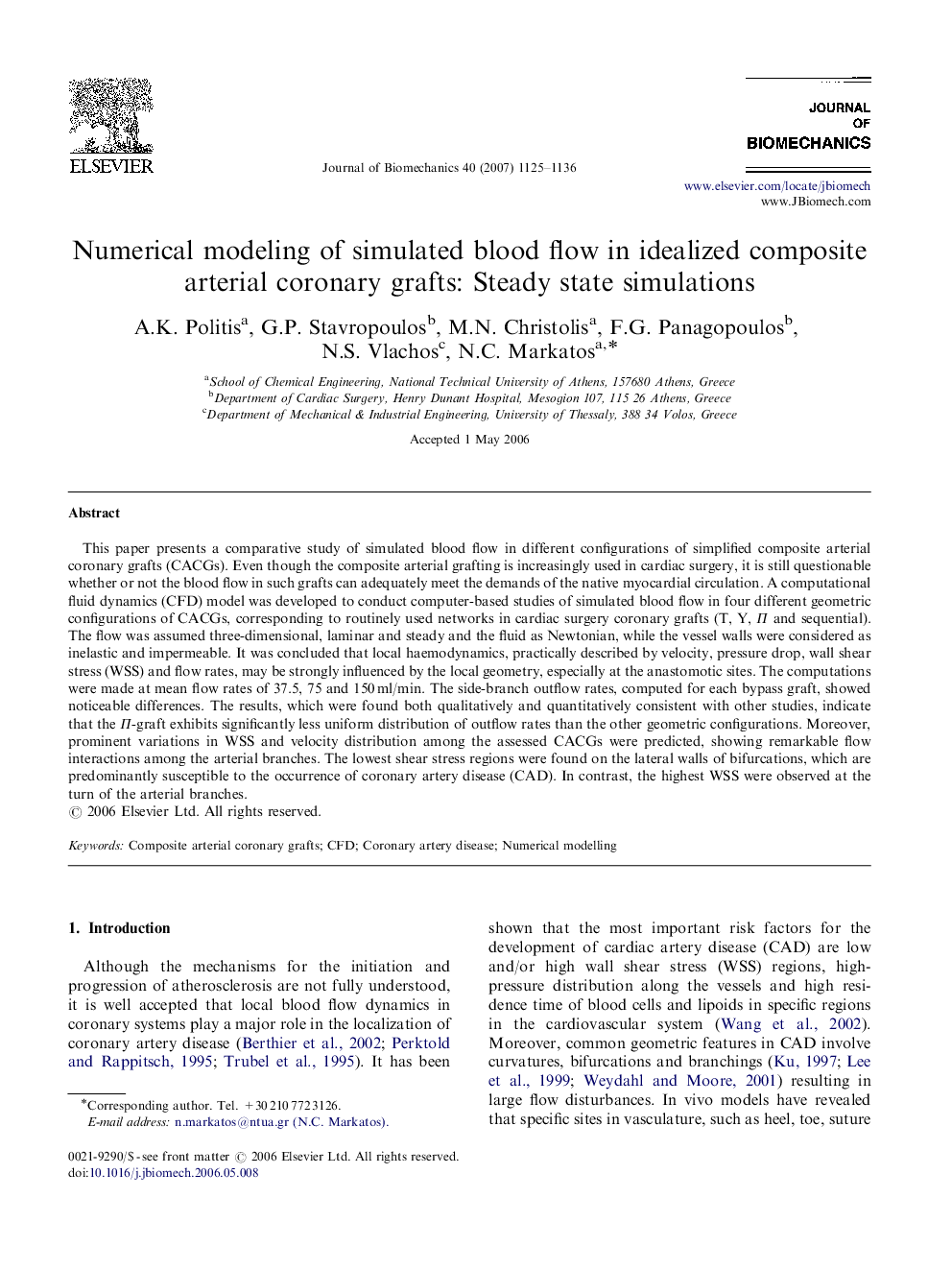| کد مقاله | کد نشریه | سال انتشار | مقاله انگلیسی | نسخه تمام متن |
|---|---|---|---|---|
| 875345 | 910379 | 2007 | 12 صفحه PDF | دانلود رایگان |

This paper presents a comparative study of simulated blood flow in different configurations of simplified composite arterial coronary grafts (CACGs). Even though the composite arterial grafting is increasingly used in cardiac surgery, it is still questionable whether or not the blood flow in such grafts can adequately meet the demands of the native myocardial circulation. A computational fluid dynamics (CFD) model was developed to conduct computer-based studies of simulated blood flow in four different geometric configurations of CACGs, corresponding to routinely used networks in cardiac surgery coronary grafts (T, Y, Π and sequential). The flow was assumed three-dimensional, laminar and steady and the fluid as Newtonian, while the vessel walls were considered as inelastic and impermeable. It was concluded that local haemodynamics, practically described by velocity, pressure drop, wall shear stress (WSS) and flow rates, may be strongly influenced by the local geometry, especially at the anastomotic sites. The computations were made at mean flow rates of 37.5, 75 and 150 ml/min. The side-branch outflow rates, computed for each bypass graft, showed noticeable differences. The results, which were found both qualitatively and quantitatively consistent with other studies, indicate that the Π-graft exhibits significantly less uniform distribution of outflow rates than the other geometric configurations. Moreover, prominent variations in WSS and velocity distribution among the assessed CACGs were predicted, showing remarkable flow interactions among the arterial branches. The lowest shear stress regions were found on the lateral walls of bifurcations, which are predominantly susceptible to the occurrence of coronary artery disease (CAD). In contrast, the highest WSS were observed at the turn of the arterial branches.
Journal: Journal of Biomechanics - Volume 40, Issue 5, 2007, Pages 1125–1136